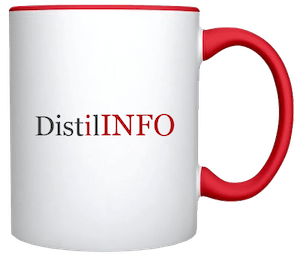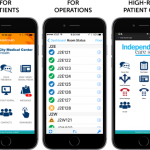In recent months, the unexpected and rapid spread of the coronavirus has overshadowed home health agencies’ transition to the Patient-Driven Groupings Model (PDGM).
That’s still true throughout much of the country, especially with new COVID-19 hotspots emerging and the federal government’s top infectious-disease expert voicing frustration that Americans aren’t taking the virus seriously.
But as home health agencies continue to deal with the public health crisis, they shouldn’t overlook the overwhelming positives from the nearly first six months of PDGM.
“I believe we were starting to really figure things out in the first quarter,” Mike Dordick, president of Pennsylvania-based health care consulting firm McBee Associates, told Home Health Care News.
Want to publish your own articles on DistilINFO Publications?
Send us an email, we will get in touch with you.
Looking at the home health industry as a whole, better-than-expected reimbursement rates and more accurate coding are just a couple of the many PDGM positives. Additionally, on the ground level, many agencies have also experienced stronger communication between the clinical and financial sides of their businesses.
That latter point has specifically helped agencies become more timely in their documentation and billing processes, according to Laura Page-Greifinger, a consultant, thought leader and speaker with Kansas-based Netsmart, a health care information and technology company.
Netsmart is also the parent company of McBee.
“We’re seeing so much more timeliness,” Page-Greifinger said. “There aren’t as many silos as there used to be.”
An example is start-of-care documentation.
“It used to be that you might have gotten your start of care [documentation] maybe five to seven days after it happened, so then you could drop your RAP,” Page-Greifinger said. “We found that agencies are being much more timely. They’re requesting that any data that’s collected by clinicians on visits is in their hand by 9 o’clock the next morning, if not the same day.”
In turn, documentation accuracy has also improved, which helps agencies avoid future paperwork headaches or processing delays.
Generally, data collected at the point of care is much more accurate than data entered into a system several hours after an in-home visit.
“In Q1, from what I’m hearing and what I see based on the data that I have, I think people paid far more attention to accurate coding,” Page-Greifinger said “And I think coding was much stronger, because the information gathered at referral was much better and more complete.”
The PDGM positive
In some ways, PDGM actually helped home health agencies respond to the coronavirus once it began to spread.
When the U.S. Centers for Medicare & Medicaid Services (CMS) designed PDGM, the agency sought to link reimbursement to patient characteristics and care needs.
The goal, CMS hoped, was to make sure the sickest, most vulnerable populations were receiving high-quality care — and that agencies delivering that care were well-compensated.
Based on that framework, many home health agencies spent 2019 increasing their ability to care for challenging, complex patients, whether that meant introducing more robust wound care programs or taking similar measures. Those skills have now been instrumental in treating COVID-19 patients, according to Allison Cannon, a senior executive at McBee and the former chief administrative officer at Quality in Real Time (QIRT).
“[Some] have been preparing their wound care groups, bringing together a group of nurses who would be focused on wound care, complex cases,” Cannon told HHCN. “That’s in line with PDGM, of course, but that also allows agencies to keep people at home — not in the hospital, where they can get infections and whatnot.”
Netsmart announced it acquired QIRT on June 2. QIRT is now part of the McBee strategic consulting business unit, a move allowing McBee to expand its OASIS, minimum data set (MDS) coding and consulting services for post-acute care and behavioral health providers.
“In order to really do well for our client base in the industry, we needed to be larger,” said Dordick, who also serves as senior vice president of post-acute strategy for Netsmart. “We needed be able to have more scale to do more more services for the communities we serve.”
Operating in silos
When it comes to specific reimbursement numbers, McBee saw first-period case mix jump to the 1.30 range during Q1, with second-period case mix jumping to the 0.80 or 0.90 range, according to Dordick. Averaging those figures out yields an overall case mix around 1.10, meaning PDGM was fairly positive in the first few months of 2020.
Dordick, Cannon and Page-Greifinger all agreed that the transition success was mostly due to widespread industry preparation last year.
“Again, the winners in PDGM –pre-COVID — were the people who prepared the correct way,” Cannon said. “We really advocated in the industry for them to go out and evaluate their referral sources and change those sources to better align with PDGM.”
While timeliness has broadly been improved within many agencies, that hasn’t always been the case with some hospital-based home health organizations.
“They seem to continue to operate in silos,” Cannon said. “They didn’t seem to see this demand to have their days to RAP decrease. They didn’t worry so much about cash flow, where the more standalone agencies and smaller agencies did worry about that. I think they’re very slow to come around to understand PDGM — some, not all of them.”
Source: Home Health Care News








